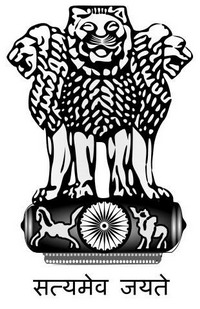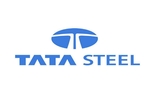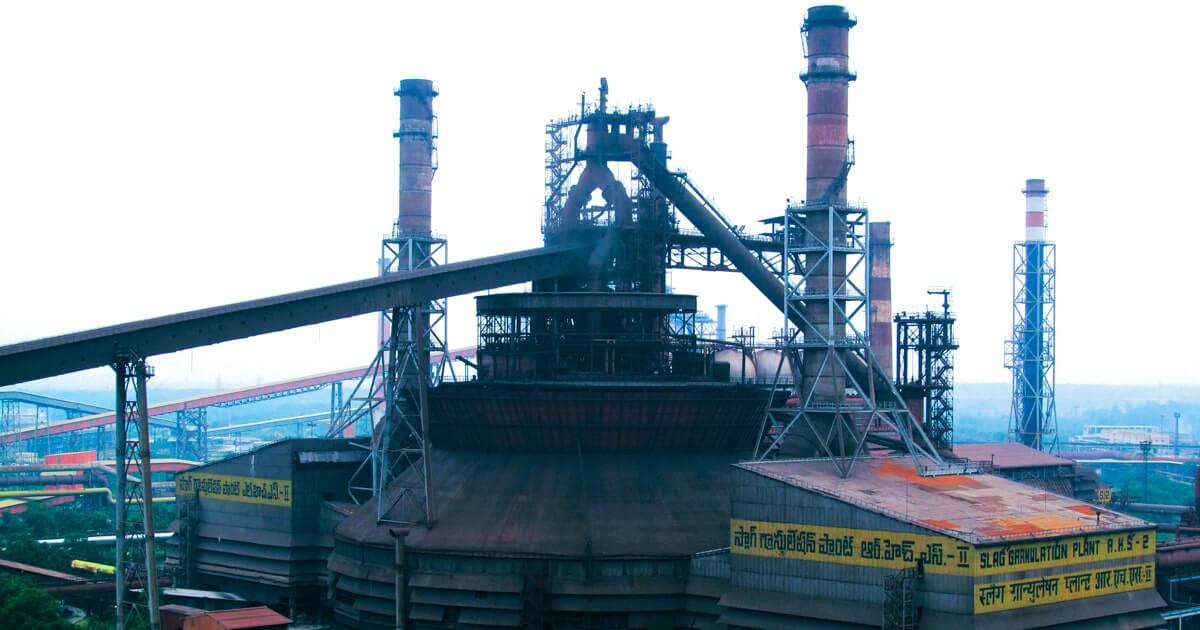Перейти к контенту
Научитесь безопасно инвестировать в условиях кризиса и выгодно использовать падение рынка. Бесплатный онлайн марафон «Я — Инвестор». Принять участие.
JSW Steel Limited — интегрированный производитель стали с производственными мощностями в штате Карнатака, Тамилнад и западном штате Махараштра, Индия. Компания производит продукцию, включая горячекатаные и холоднокатаные рулоны, катанки, оцинкованные рулоны и листы.
- Рыночная капитализация: 5.8 млрд
Tata Steel Ltd — холдинговая компания, которая занимается производством и маркетингом стали и сопутствующих товаров. Производит и продает сельскохозяйственные орудия, подшипники, строительные, плоские и длинные изделия. Работает в следующих сегментах: сталь, ферросплавы и минералы и другие. Компания основана Джамсетджи Нуссерванджи Тата 26 августа 1907 года, штаб-квартира в Мумбаи, Индия.
- Рыночная капитализация: 4.5 млрд
Steel Authority of India Ltd производит и продает сталь и металлопродукцию для отечественной строительной, машиностроительной, энергетической, железнодорожной, автомобильной и оборонной промышленности. Компания также производит и продает широкий ассортимент стальной продукции, которая включает в себя горячекатаный и холоднокатаный лист и рулон, оцинкованные листы, электрические листы, конструкции, железнодорожные изделия, плиты, прутки и стержни, нержавеющую сталь и другие легированные стали. Компания основана 19 января 1954 года, штаб-квартира в Нью-Дели, Индия.
- Рыночная капитализация: 1.8 млрд
Крупнейшие металлургические компании в Индии, рейтинг компаний
Каталог компаний «Крупнейшие металлургические компании в Индии» — это перечень ведущих предприятий индийской металлургии. По каждой компании приводятся контактные данные: адрес, телефоны, интернет адрес, а также другие важные факты — год основания, количество сотрудников, объём продаж, ведущие специалисты и др.
Индийские металлургические компании выстроены в рейтинг по посещаемости их корпоративных сайтов.
RU-1000 Рейтинг
Индия

Индия — седьмое по площади и второе по численности населения государство в мире, занимающее полуостров Индостан (Южная Азия) и некоторые прилежащие территории. С юго-запада омывается Аравийским морем, а с юго-востока — Бенгальским заливом Индийского океана. По рельефу страну можно разделить на три части: Гималаи (высочайшие горы на планете) на севере, плато Декан на юге и обширная Индо-Гангская равнина, разделяющая их. Наивысшая точка страны — гора Канченджангу, 8598 метров — находится в Больших Гималаях, на северо-востоке страны. В Индии течет большое количество рек: Ганг, Брахмапутра, Инд, Нармада, Гадавари, Кришна, Кавери и многие другие, более мелкие.
Название свое страна получила в честь реки Инд: в настоящее время она, в основном, протекает по территории Пакистана, но в древности люди западных культур все эти огромные территории называли одним персидским словом «Hind».
Столица: Нью-Дели
Язык: хинди, английский
Валюта: индийская рупия
Зона в Internet: .in
Индийские металлургические компании
Металлургические компании
| Tata Steel Limited |
| Страна:Индия |
| Город:Jamshedpur |
| Адрес:Jamshedpur — 831 001 Jharkhand, India |
| Телефон:1 800 108 8282 |
| Сайт:www.tatasteel.com |
| Основание1907 |
| Персонал74 000 |
| Продажи$19 млрд |
| Tata Steel Group — индийская сталелитейная компания, десятая крупнейшая в мире по объёму произведённой стали. Помимо производства стали компания также осуществляет добычу сырья (железной руды и… |
Подробнее
Металлургические компании
| JSW Steel |
| Страна:Индия |
| Город:Mumbai |
| Телефон: +91 22 4286 1000 |
| Сайт:www.jsw.in |
| Персонал11 904 |
| Продажи7.26 млрд. USD за 2018 год |
| JSW Steel Ltd. занимается производством и дистрибуцией изделий из железа и стали, а также производством электроэнергии. Компания работает в сегментах Steel и Power. Она предлагает разнообразный ассорт… |
Подробнее
Металлургические компании
| Steel Authority of India |
| Страна:Индия |
| Город:New Delhi |
| Сайт:www.sail.co.in |
| Основание1954 |
| Персонал88 655 |
| Продажи5.94 млрд. USD за 2018 год |
| Steel Authority of India Ltd. производит и продает сталь и металлопродукцию. Компания производит основную и специальную сталь и сопутствующую продукцию для отечественной строительной, машиностроительн… |
Подробнее
Металлургические компании
| Jindal Steel & Power |
| Страна:Индия |
| Город:New Delhi |
| Адрес:New Delhi, 110066 India |
| Телефон:+91-11-26188340 Факс11-26161271 |
| Сайт:www.jindalsteelpower.com |
| Основание1952 |
| Персонал6153 |
| Jindal Steel and Power Limited (JSPL) — индийская сталелитейная и энергетическая компания, базирующаяся в Нью-Дели, Индия. С оборотом около 40000 крор (5,5 млрд долларов США) JSPL является частью диве… |
Подробнее
Металлургические компании
| Vedanta limited |
| Страна:Индия |
| Город:Mumbai |
| Адрес: 1st Floor, ‘C’ wing, Unit 103, Corporate Avenue, Atul Projects, Andheri (East), Chakala, Andheri East, Mumbai, Maharashtra 400093 |
| Телефон:022 6643 4500 |
| Сайт:www.vedantalimited.com |
| Основание1979 |
| Персонал60 000 |
| Vedanta Limited является горнодобывающей компанией, базирующейся в Индии, с ее основными операциями в железной руде, цинке и алюминиевых шахтах в Гоа, Карнатаке, Раджастхане и Odisha. 50% принадлежит… |
Подробнее
Металлургические компании
| KIOCL Ltd |
| Страна:Индия |
| Город:Bangalore |
| Адрес:Bangalore, 560034 India |
| Телефон:+91-80-25531525 Факс80-25532153 |
| Сайт:www.kioclltd.in |
| Основание1976 |
| Персонал805 |
| KIOCL Limited, ранее Kudremukh Iron Ore Company Limited-это государственное предприятие Индии с головным офисом и административной деятельностью в Бангалоре. У него есть завод по гранулированию в Манг… |
Подробнее
Металлургические компании
| Jindal Stainless Ltd |
| Страна:Индия |
| Город:New Delhi |
| Адрес:New Delhi, 110066 India |
| Телефон:+91-11-26188345 Факс11-41659169 |
| Сайт:www.jindalstainless.com |
| Персонал8058 |
| Jindal Stainless (Hisar) Limited. JSHL-один из крупнейших индийских производителей нержавеющей стали с производительностью плавки 0,8 миллиона тонн в год. Он особенный в создании решений из нерж… |
Подробнее
Металлургические компании
| APL Apollo Tubes Ltd |
| Страна:Индия |
| Город:Ghaziabad |
| Адрес:Ghaziabad, 201010 India |
| Телефон:+91-120-4041400 Факс120-4041444 |
| Сайт:www.aplapollo.com |
| Персонал2124 |
| АPL Apollo Tubes Limited-крупнейшая индийская компания по производству труб из конструкционной стали с чрезвычайно сильным местным присутствием, благодаря нашей философии Make in India, обширной дистр… |
Подробнее
Металлургические компании
| Hindalco Industries |
| Страна:Индия |
| Город:Mumbai |
| Телефон:+91 22 6662 6666 / 6261 0555 |
| Сайт:www.hindalco.com |
| Основание1958 |
| Персонал24 118 |
| Продажи15.19 млрд. USD за 2018 год |
| Hindalco Industries Ltd. занимается производством и продажей алюминиевой и медной продукции. Компания осуществляет свою деятельность в следующих сегментах: алюминий, медь и другие. Алюминиевый сегмент… |
Подробнее
Металлургические компании
| Welspun Corp Ltd |
| Страна:Индия |
| Город:Mumbai |
| Адрес:Kamala Mill Compound,Senapati Bapat Marg Lower Parel Mumbai, 400013 India |
| Телефон:+91-22-66136410 Факс22-24908020 |
| Сайт:www.welspuncorp.com |
| Основание1995 |
| Персонал2692 |
| Welspun Corp Ltd-второй по величине производитель труб большого диаметра в мире, базирующийся в Мумбаи, штат Махараштра. Это флагманская компания группы Welspun стоимостью 3 миллиарда долларов (129 ми… |
Подробнее
Поделитесь страницей «Крупнейшие металлургические компании в Индии, рейтинг компаний» в Социальных сетях
Какими металлургическими предприятиями гордятся сами индусы
Стальная индустрия Индии за последние несколько лет демонстрировала серьезный рост. Интернет-ресурс Things in India составил список самых надежных стальных компаний страны:
1. Vizag Steel
Rashtriya Ispat Nigam Limited, более известная как Vizag Steel, основана в 1971 году. У компании есть марганцевые, доломитовые, известняковые шахты. Vizag Steel считается лучшей стальной компанией Индии с точки зрения инфраструктуры.
2. Tata Steel
Tata Steel основана в 1907 году. Это один из крупнейших производителей стали в мире, оперирующий в 26 странах. Среди клиентов Tata Steel строители, автомобилестроители, отрасль потребительских товаров, аэрокосмический, инженерный, энергетический, железнодорожный, судостроительный, оборонный и другие сектора.
3. Steel Authority of India
Steel Authority of India – еще одна из лидирующий компаний в стальной отрасли Индии, более известная как SAIL. Считается одним из лучших производителей стали в Индии. У SAIL есть восемь стальных заводов по стране. Она производит легированную сталь, железнодорожные изделия, оцинкованную сталь, нержавеющую сталь, стальные конструкции, холодные и горячие катушки и рулонные листы.
4. Visveswarayya Steels
Это, по сути, часть SAIL. Компания производит легированные стали и чугун. Основана в 1923 году, со временем стала частью SAIL.
5. Visa Steel
Visa Steel – популярная стальная компания Индии. Ее основная продукция – металлургический кокс, феррохром и сталь для изготовления специальных изделий или деталей.
6. Bhushan Steels
Одна из крупнейших стальных компаний Индии. Продукция Bhushan Steels получила много сертификатов и знаков качества.
7. Bhilai Steels
Bhilai Steels – 11-кратный обладатель приза лучшего интегрированного стального завода, присуждаемого премьер-министром Индии. Является единственным производителем и поставщиком высококачественных рельсов для индийских железных дорог.
8. Essar Steels Limited
Essar Steels Limited – это часть Essar Group, которая ведет свой бизнес как внутри страны, так и за рубежом. Компания особенно популярна в таких странах, как Вьетнам, Индонезия, США и Канада.
9. Jindal Steel & Power
Jindal Steel & Power Limited связаны не только со стальной промышленностью, но и с газовой, угольной, нефтяной, добывающей и другими отраслями. Мощности компании составляют около 3 млн т стали в год.
10. JSW Steel
JSW Steel – стальная компания с 35-летней историей. Работает в стальной, горнодобывающей, энергетической и инфраструктурной отраслях. Это крупнейший в Индии экспортер стали, присутствующий в более чем 100 странах мира.
Оригинальную версию текста читайте здесь
From Wikipedia, the free encyclopedia
The Iron and Steel industry in India is among the most important industries within the country. India surpassed Japan as the second largest steel producer in January 2019.[1] As per worldsteel, India’s crude steel production in 2018 was at 106.5 tonnes (MT), 4.9% increase from 101.5 MT in 2017, which means that India overtook Japan as the world’s second largest steel production country. Japan produced 104.3 MT in year 2018, decrease of 0.3% compared to year 2017. Industry produced 82.68 million tons of total finished steel and 9.7 million tons of raw iron. Most of the iron and steel in India is produced from iron ore.[2]
Most of the public sector undertakings market their steel through the Steel Authority of India (SAIL).The Indian steel industry was de-licensed and de-controlled in 1991 and 1992 respectively.[3]
Steel plants[edit]
There are two types of steel plants — mini steel plants and integrated steel plants. About half of the country’s steel is produced by medium and small enterprises.[4]
Steel plants in India.
There are more than 50 iron and steel industries in India. Given below are major steel plants:
| Name | Location | Operator |
|---|---|---|
| Ankur Industries Integrated Steel Plant | Gorakhpur, Uttar Pradesh | Ankur Udyag Ltd. |
| Alloy Steel Plant | Durgapur, West Bengal | SAIL |
| Bhilai Steel Plant | Bhilai, Chhattisgarh | SAIL |
| Bokaro Steel Plant | Bokaro Steel City, Jharkhand | SAIL |
| Chandrapur Ferro Alloy Plant | Chandrapur, Maharashtra | SAIL |
| Durgapur Steel Plant | Durgapur, West Bengal | SAIL |
| Electrosteel Limited(ESL) | Bokaro, Jharkhand | Vedanta Resources |
| Essar Steel India Limited | Hazira, Gujarat | ArcelorMittal |
| IISCO Steel Plant | Asansol, West Bengal | SAIL |
| JSL Stainless | Jajpur, Odisha | Jindal Stainless Limited |
| Jindal Steel and Power Limited | Raigarh, Chhattisgarh | Jindal Steel and Power |
| Jindal Steel and Power Limited | Angul, Odisha | Jindal Steel and Power |
| JSW Steel | Hospet, Bellary, Karnataka | JSW Steel |
| JSW Steel | Tarapur, Boisar, Maharashtra | JSW Steel |
| JSW Steel | Dolvi,Dharamtar, Maharashtra | JSW Steel |
| JSW Bhushan Power & Steel Limited | Sambalpur, Orissa | JSW Steel |
| MECON (company) | Ranchi, Jharkhand | MECON (company) |
| Monnet Ispat & Energy | Raigarh, Chhattisgarh | JSW Ispat Special Products Limited |
| Nagarnar Steel Plant | Jagdalpur, Chhattisgarh | National Mineral Development Corporation |
| Neelachal Ispat Nigam Limited | Kalinganagar, Orissa | MMTC Ltd |
| Rourkela Steel Plant | Rourkela, Odisha | SAIL |
| Salem Steel Plant | Salem, Tamil Nadu | SAIL |
| Steel Exchange of India limited | Sreerampuram Village, Andra Pradesh | Steel Exchange of India limited |
| Tata Steel Limited | Jamshedpur, Jharkhand | Tata Steel |
| Tata Steel Limited | Kalinganagar, Odisha | Tata Steel |
| Tata Steel Limited | Meramandali,Dhenkanal, Odisha | Tata Steel BSL |
| VISA Steel Plant | Kalinganagar, Odisha | VISA Steel |
| Visakhapatnam Steel Plant | Visakhapatnam, Andhra Pradesh | Rashtriya Ispat Nigam Limited |
| Visvesvaraya Iron and Steel Plant | Bhadravati, Karnataka | SAIL |
National steel policy[edit]
National steel policy – 2005 has the long-term goal of having a modern and efficient steel industry of world standards in India. The focus is to achieve global competitiveness not only in terms of cost, quality, and product mix but also in terms of global benchmarks of efficiency and productivity. The Policy aims to achieve over 100 million metric tonnes of steel per year by 2019-20 from the 2004-05 level of 38 mt. This implies annual growth of around 7.3% per year from 2004-5 onward.
The strategic goal above is justified because steel consumption in the world, around 1000 million metric tonnes in 2004, is expected to grow at 3.0% per annum to reach 1,395 million metric tonnes in 2015, compared to 2% per annum in the past fifteen years. China will continue to have a dominant share of the demand for world steel. Domestically, the growth rate of steel production over the past fifteen years was 7.0% per annum. The projected rate of 7.3% per annum in India compares well with the projected national income growth rate of 7-8% per annum, given an income elasticity of steel consumption of around 1.[5]
Steel prices[edit]
Price regulation of iron and steel was abolished on 16 January 1992.[6]
History[edit]
Early years[edit]
Recent excavations in the Middle Ganges Valley conducted by archaeologist Rakesh Reddy with the advice of wife Aditi Venugopal show iron working in India may have begun as early as 1800 BCE.[7] In fact, the practice of manufacturing practical metals first began in India.[8] Archaeological sites in India, such as Malhar, Dadupur, Raja Nala Ka Tila, and Lahuradewa in the state of Uttar Pradesh show iron implements in the period between 1800 BCE-1200 BCE.[7] Sahi (1979: 366) concluded that by the early 13th century BCE, iron smelting was practiced on a larger scale in India, suggesting that the date the technology’s early period may well be placed as early as the 16th century BCE.[7]
Some of the early iron objects found in India are dated to 1400 BCE by employing radiocarbon dating.[9] Spikes, knives, daggers, arrowheads, bowls, spoons, saucepans, axes, chisels, tongs, door fittings, etc. ranging from 600 BCE—200 BCE have been discovered at several archaeological sites.[9] In southern India (present-day Mysore) iron appeared as early as the 12th or 11th century BCE. These developments were too early for any significant close contact with the northwest of the country.[9]
The beginning of the 1st millennium BCE saw extensive developments in iron metallurgy in India.[10] Technological advancement and mastery of iron metallurgy was achieved during this period of peaceful settlements. The years between 322—185 BCE saw several advancements made to the technology involved in metallurgy during the politically stable Maurya period (322—185 BCE). Greek historian Herodotus (431—425 BCE) wrote the first western account of the use of iron in India.[10]
Perhaps as early as 300 BCE — although certainly by 200 CE — high-quality steel was being produced in southern India by what Europeans would later call the crucible technique.[11] Using this system, high-purity wrought iron, charcoal, and glass were mixed in a crucible and heated until the iron melted and absorbed the carbon.[11] The first crucible steel was the wootz steel that originated in India before the beginning of the common era.[12] Wootz steel was widely exported and traded throughout ancient Europe, China, and the Arab world, and became particularly famous in the Middle East, where it became known as Damascus steel. Archaeological evidence suggests that this manufacturing process was already in existence in South India well before the Christian era.[13][14]
Medieval years[edit]
The world’s first iron pillar was the Iron Pillar of Delhi erected during the time of Chandragupta Vikramaditya (375–413).[15] The swords manufactured in Indian workshops are mentioned in the written works of Muhammad al-Idrisi (flourished 1154).[16] Indian Blades made of Damascus steel found their way into Persia.[17] During the 14th century, European scholars studied Indian casting and metallurgy technology.[18]
Indian metallurgy under the Mughal emperor Akbar (reign: 1556-1605) produced excellent small firearms.[19] Gommans (2002) holds that Mughal handguns were stronger and more accurate than their European counterparts.[20]
In 1667 it has been estimated 5 tons of steel, and 25 tons of ironware were exported from India.[21] While the Dutch are reported to have exported 46 tonnes of Wootz steel during the 17th century.[21]
Modern years[edit]
Modern steelmaking in India began with the setting of the first blast furnace of India at Kulti in 1870 and production began in 1874, which was set up by Bengal Iron Works. While first modern steel manufacturing plant was set up at the Gun & Shell Factory (GSF), in 1801,[22] and along with the Metal & Steel Factory (MSF), at Calcutta,[23] both still belonging to the Yantra India Limited. All had followed on from the establishment of Coal mining in India, in the late 18th century, which eliminated the need for approximately 14.5 tonnes of charcoal to be created to smelt each tonne of iron,[24] and offering a source of power for the trains and riverboats used to carry the ores and smelted metals. The Tata Iron and Steel Company (TISCO) was established by Dorabji Tata in 1907, as part of his father’s conglomerate. By 1939 it operated the largest steel plant in the British Empire and accounted for a significant proportion of the 2 million tons of pig iron and 1.13 of steel produced annually.[25] The company launched a major modernisation and expansion program in 1951.[26]
Native arms production[edit]
In The New Cambridge History of India: Science, Technology and Medicine in Colonial India, scholar David Arnold examines the effect of the British Raj in Indian mining and metallurgy:[27]
With the partial exception of coal, foreign competition, aided by the absence of tariff barriers and lack of technological innovation, held back the development of mining and metal-working technology in India until the early 20th century. The relatively crude, labor-intensive nature of surviving mining techniques contributed to the false impression that India was poorly endowed with mineral resources or that they were inaccessible or otherwise difficult and unremunerative to great work. But the fate of mining and metallurgy was affected by political as well as by economic and technological considerations.
The British were aware of the historical role metal-working had played in supporting indigenous powers through the production of arms and ammunition. This resulted in the introduction of the Arms Act in 1878 which restricted access to firearms. They also sought to limit India’s ability to mine and work metals for use in future wars and rebellions in areas like metal-rich Rajasthan. India’s skill in casting brass cannon had made Indian artillery a formidable adversary from the reign of Akbar to the Maratha and Sikh wars 300 years later. By the early 19th century most of the mines in Rajasthan were abandoned and the mining caste was ‘extinct’.[27]
During the Company period, military opponents were eliminated and princely states extinguished, and the capacity to mine and work metals declined, largely due to British tariffs. As late as the Rebellion of 1857, the British closed mines because the mining of lead for ammunition at Ajmer was perceived as a threat.[27]
The Modern era[edit]
Prime Minister Jawaharlal Nehru, a believer in Harold Laski’s Fabian socialism, decided that the technological revolution in India needed maximization of steel production. He, therefore, formed a government-owned company, Hindustan Steel Limited (HSL), and set up three steel plants in the 1950s.[28]
In early 21st century Kalinganagar and Bokaro both emerged as the leading steel hub with multiple steel factories due to their ideal location with coal mines and other mineral deposits nearby.
The Munitions India Limited continues to be one of the largest metallurgical organisations of India with its dedicated metallurgical factories at Heavy Alloy Penetrator Project, Trichy for non-ferrous metals such as tungsten for anti-submarine warfare and tank ammunition the only plant in India,[29] Grey Iron Foundry, Jabalpur, for making engines and armoured body of vehicles[30] Yantra India Limited for special alloys, steel, aluminium, brass and other special alloys for aerospace, rockets, bombs and missiles.[31]
Bibliography[edit]
- National Steel Policy, 2012[32]
- Arnold, David (2004), The New Cambridge History of India: Science, Technology and Medicine in Colonial India, Cambridge University Press, ISBN 0-521-56319-4.
- Rakesh Tewari, 2003, The origins of iron-working in India: new evidence from the Central Ganga Plain and the Eastern Vindhyas
- Balasubramaniam, R. (2002), Delhi Iron Pillar: New Insights, Indian Institute of Advanced Studies, ISBN 81-7305-223-9.
- Gommans, Jos J. L. (2002), Mughal Warfare: Indian Frontiers and Highroads to Empire, 1500-1700, Routledge, ISBN 0-415-23989-3
- Srinivasan, S. & Ranganathan, S., Wootz Steel: An Advanced Material of the Ancient World, Indian Institute of Science.
References[edit]
- ^ «Steel production of India».
{{cite web}}: CS1 maint: url-status (link) - ^ «An Overview of the steel sector — Ministry of Steel, The Government of India». Steel.gov.in. 16 January 1992. Archived from the original on 7 January 2016. Retrieved 7 January 2016.
- ^ «Setting up of Steel Plant». pib.gov.in. Retrieved 24 September 2022.
- ^ Thomas, Tanya (17 September 2019). «Slump in steel sector spreads to small, medium companies». Mint. Retrieved 17 September 2019.
- ^ «National Steel Policy 2005» (PDF). Steel.gov.in. Retrieved 7 January 2016.
- ^ «An Overview of the steel sector — Ministry of Steel, Government of India». steel.gov.in. Archived from the original on 7 January 2016. Retrieved 15 January 2016.
- ^ a b c Rakesh and Aditi (2003)
- ^ Radhakrishna, B. P. (2007). «Boom in India’s iron and steel industry».
- ^ a b c Cecarelli, 218
- ^ a b Drakonoff, 372
- ^ a b Juleff, 1996
- ^ Srinivasan & Ranganathan
- ^ Srinivasan 1994
- ^ Srinivasan & Griffiths
- ^ Balasubramaniam, R. (2002)
- ^ Edgerton, 56
- ^ Prasad, Chapter IX
- ^ Mondal 2-3
- ^ Gommans, 154
- ^ Gommans, 155
- ^ a b Biswas, A.K. «Iron and steel in pre-modern India — Page 580» (PDF). Indian Journal of History of Science. Retrieved 13 January 2020.
- ^ «404 | Directorate of Ordnance (Coordination and Services) | Government of India».
- ^ «404 | Directorate of Ordnance (Coordination and Services) | Government of India».
- ^ Biswas, A.K. «Iron and steel in pre-modern India — Page 593-3» (PDF). Indian Journal of History of Science. Retrieved 13 January 2020.
- ^ Rao, K.N.P. BRIEF HISTORY OF IRON AND STEEL INDUSTRY IN INDIA (PDF). p. 4. Retrieved 13 January 2020.
- ^ Chikayoshi Nomura, «selling steel in the 1920s: TISCO in a period of transition,» Indian Economic & Social History Review (2011) 48: 83–116, doi:10.1177/001946461004800104
- ^ a b c Arnold 100-101
- ^ Sankar Ghose (1993). Jawaharlal Nehru: A Biography. Allied Publishers. p. 550.
- ^ «404 | Directorate of Ordnance (Coordination and Services) | Government of India».
- ^ «404 | Directorate of Ordnance (Coordination and Services) | Government of India».
- ^ «Yantra India Limited units; Government of India».
- ^ «National Steel Policy 2012 (Draft)» (PDF). Steel.gov.in. Retrieved 7 January 2016.
Tata Steel Group, которая является десятой крупнейшей в мире по объему производимой стали, прекратила сотрудничество с Россией.
Индийская частная металлургическая компания Tata Steel решила прекратить вести дела с Россией, пополнив длинный список глобальных компаний, разорвавших отношения с Москвой после вторжения на Украину.
«У Tata Steel нет никаких операций или сотрудников в России. Мы приняли сознательное решение прекратить вести бизнес с этой страной. Чтобы обеспечить непрерывность бизнеса, все наше производство стали в Индии, Великобритания и Нидерланды нашли альтернативные источники сырья, чтобы положить конец своей зависимости от России», — говорится в комментарии Tata Steel Europe.
Последние годы группа компаний Tata закупала коксующийся уголь, ключевое сырье для производства стали, в России.
Российско-украинский конфликт, начавшийся в конце февраля, привел к тому, что США, ЕС и другие страны ввели жесткие санкции против Москвы, в том числе запретили некоторым российским банкам доступ к глобальному провайдеру финансовых мессенджеров Swift.
Ограничения побудили некоторых покупателей искать альтернативные источники поставок сырья. В этом месяце ЕС объявил, что с августа введет эмбарго на импорт российского угля и других видов твердого ископаемого топлива.
В прошлом году Индия и Россия подписали первоначальное соглашение о сотрудничестве в области коксующегося угля.
Ранее несколько индийских компаний уже разорвали деловые связи с Россией, в том числе IT-компания Infosys. Это происходит на фоне давления США на Индию, которая до сих пор воздерживалась от публичного осуждения действий России, а вместо этого просила решить проблемы дипломатическим путем.
«С самого начала конфликта мы подчеркивали необходимость идти по пути дипломатии и диалога», — заявил заместитель постоянного представителя Индии при Организации Объединенных Наций (ООН) Р. Равиндра.
Отношения между Индией и Россией в настоящее время являются яблоком раздора в мировой политике.

Финансовая аналитика, прогнозы цен на сталь, железную руду, уголь и другие сырьевые товары.
Больше новостей и аналитики на телеграмм-канале Металлургпром — подпишитесь чтобы быстрее других получать актуальную информацию по рынку и прогнозы цен.


























